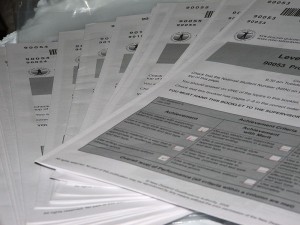TUESDAY, 7 DECEMBER 2010
Despite rising numbers of women choosing to follow degree courses in the physical sciences, a significant inequality in numbers still persists. A gender gap is also present in recorded performance as can be seen from exam results published by the University of Cambridge in 2009/2010. In Part II Experimental and Theoretical Physics, 45.7% of men gained a first class mark compared to just 29.2% of women. Statistics like these follow an all too familiar pattern and have led many to ask why women are consistently being beaten to the top marks in physics exams.The CU-Boulder study aimed to test the hypothesis that women are being held back due to a ‘stereotype threat’, a fear of conforming to unequal expectations that inhibits their performance. It has previously been shown that this effect can be reduced through self-affirmation. Therefore, the experimenters randomly selected a group of college physics students to participate in the self-affirmation exercise. Twice a term, the students were required to spend fifteen minutes writing about values that were important to them before completing a physics test. It was found that whilst there was little difference for men, women who had completed the self-affirmation test performed significantly better than those in the control group that did not. It was concluded that the simple writing exercise reduced the gender gap from a 19% difference in achievement in the control group, to just 9% after self-affirmation. Furthermore, the gender gap was eliminated entirely for those students that had only a moderate belief in the gender gap stereotype.
The findings provide vindication for female physicists at all levels of education. The research suggests that any disparity between men and women, rather than being due to any hard-wired differences in aptitude for the physical sciences, is, in fact, all in the mind.
Written by Helen Gaffney

